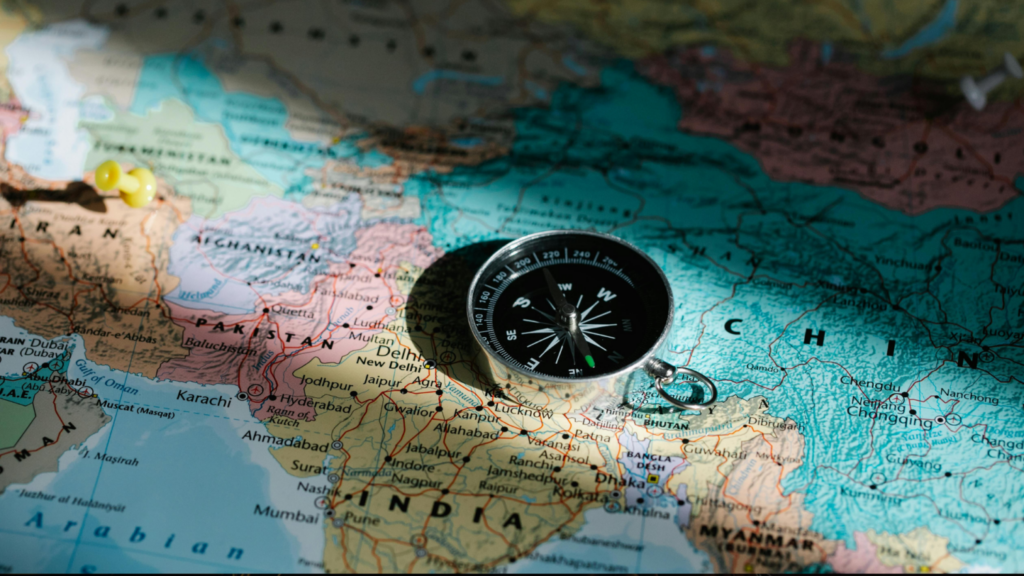China Increases Funding for BRI Projects
This article sheds light on how the unexpected rise in BRI financing fits into Beijing’s ‘small yet beautiful’ mantra.
The Belt and Road Initiative (BRI) has defined China’s relationship with the Global South since President Xi Jinping unveiled the strategy in September 2013. Thus, over US$1.308 trillion of funding has been allocated for BRI projects across over 140 countries. This includes around US$775 billion in construction contracts and US$533 billion in non-financial investments (Wang, 2025). Furthermore, while the BRI has advanced Chinese strategic interests globally with over US$19.1 trillion in trade exchanged between the People’s Republic of China (PRC) and BRI member countries since 2013, financial sustainability concerns have long plagued BRI projects, prompting Beijing to introduce several key reforms over the last few years (Wong, 2023). Hence, driven by economic slowdown, implementation issues, and the inability of numerous BRI recipient countries to repay Chinese loans, Beijing is owed close to US$1 trillion by foreign capital in 2023. Furthermore, 80% of the debt is held by countries in ‘financial distress’, resulting in President Xi Jinping announcing a new direction for the BRI in 2021 (Patterson, 2024).
The mantra of ‘Xiao Er Mei’ (小而美), which translates to ‘small and/yet beautiful’, sums up the new vision of the Belt and Road Initiative and indicates Beijing’s effort to increase oversight of BRI projects (Li, 2023). Moreover, central to these reforms has been an attempt to tighten the regulation of Chinese overseas programmes to ensure greater fiscal prudence and more closely align the BRI with Chinese geo-strategic interests (Lane, 2025). Therefore, in line with this more cautious approach, BRI funding levels fell significantly between 2020 and 2022 compared to previous years. However, the Green Finance and Development Center’s (GFDC) most recent report highlights that BRI funding unexpectedly boomed in the first half of 2025, contrary to what many close observers predicted (Wang, 2025). Understanding this dramatic increase in the flow of Chinese capital within the framework of ‘small and beautiful’ is essential, shedding light upon Beijing’s strategic and economic calculations at a time when the international trade system faces a period of unprecedented disruption.
2025 BRI investment breaks records
According to the GFDC, the first half of 2025 witnessed the most notable investment for any six-month period in the BRI’s history, with an additional US$66.2 billion in construction contracts awarded in addition to close to US$57.1 billion in investment (Wang, 2025). These grants and loans were primarily focused on the energy, mining, technology, and manufacturing sectors, which represent BRI’s transition from its early years of predominantly transport and connectivity projects (Lema, 2023). Indeed, investment in transport-related projects fell from a high of 28% in 2018 to its lowest-ever share of BRI funding, 7.2% of total expenditure. Meanwhile, energy and metals, and mining initiatives constituted around 35% and 20% respectively of all investment in the first six months of 2025 (Wang, 2025).
Funding for energy-related projects increased in the first half of 2025, constituting the highest-ever level of engagement with the sector since the BRI’s inception, with US$42 billion invested, a 100% increase from the first half of 2024 (Wang, 2025). Furthermore, these energy investments were distributed as US$30 billion for oil and gas and US$9.7 billion for renewable energy projects, a record high for both sectors, alongside ongoing financing of coal mining initiatives despite China not bankrolling the construction of any new coal plants since 2021 (Wang, 2025). Simultaneously, investments in the mining and metals sector, as well as technology and manufacturing, also broke records with close to US$24.9 billion and US$23.3 billion, respectively (Wang, 2025). Moreover, with regards to the destinations of BRI in the first sixth months of the year, Africa was at the top with US$39 billion (largely due to the awarding of contracts worth around US$20 billion for oil and gas processing facilities in Nigeria) whilst Central Asia ranked second with US$25 billion in investment (Wang, 2025).
Increased funding within the ‘small and beautiful’ model
Central to Chinese reforms of the BRI in recent years has been Beijing’s reduced risk appetite, with the PRC implementing significant changes to the planning, implementation, and regulation of BRI-financed projects (Engel et al, 2024). Moreover, since the pandemic, there has been a noticeable shift away from expansive ‘hard connectivity’ mega-projects primarily focused on large-scale transportation infrastructure to low-risk, high-yield ‘soft connectivity’ programmes with more immediate results and returns on investment. Thus, this drive to reduce corruption, strengthen risk assessments, and more closely coordinate BRI investments with China’s strategic interests is also evidently reflected in changes in development financing models adopted by Beijing in recent years (Parks et al, 2023). Indeed, Chinese financial institutions have become increasingly risk-averse since the pandemic, with observers noting that loan volumes, deal sizes, and credit exposure reduced markedly following 2020. However, the first six months of 2025 signal an important deviation from this pattern of more hesitant investment (Tan, 2024).
Bibliography
- Engel, L., Hwang, J., Morro, D., Bien-aime, V.Y. (2024). Relative Risk and the Rate of Return: Chinese Loans to Africa Database 2000-2023. Boston University Global Development Policy Center. [online] Aug. Available at: https://www.bu.edu/gdp/files/2024/08/GCI-PB-23-CLA-2024-FIN.pdf
- Landry, D., Tang, Keyi. (2025). Debunking the Patient Capital Myth: The Reality of China’s Resource-Backed Lending Practices. New Security Beat. [online] 27 Mar. Available at: https://www.newsecuritybeat.org/2025/03/debunking-the-patient-capital-myth-the-reality-of-chinas-resource-backed-lending-practices/
- Lane, G. (2025). China’s Belt and Road Initiative in the ‘Small and Beautiful’ Era. The Lookout Report. [online] 2 Apr. Available at: https://www.lookoutreport.co.uk/p/chinas-belt-and-road-initiative-in
- Lema, A.R. (2023). From a “project of the century” to “small is beautiful”: The changing face of the BRI in Africa. [online] 4 Jul. Available at: https://munkschool.utoronto.ca/belt-road/research/project-century-small-beautiful-changing-face-bri-africa
- Li, E. (2023). How to Define “Xiao Er Mei (Small or Beautiful) in the Belt and Road Initiative. [online] 19 Feb. Available at: https://projectfinance.com.cn/how-to-define-xiao-er-mei-small-or-beautiful-in-the-belt-and-road-initiative/2023/02/19/
- Parks, B.C., Malik, A.A., Escobar, B., Zhang, S., Fedorochko, R., Solomon, K., Wang, F., Vlasto, L., Walsh, K., Goodman, S. (2023). Belt and Road Reboot, Beijing’s Bid to De-Risk Its Global Infrastructure Initiative. AIDDATA. [online] 6 Nov. Available at: https://www.aiddata.org/publications/belt-and-road-reboot
- Patterson, S. (2024). The BRI at 10: A report card from the Global South. AIDDATA. [online] 26 Mar. Available at: https://www.aiddata.org/blog/the-bri-at-10-a-report-card-from-the-global-south#:~:text=Yet%2C%20Beijing%20is%20not%20only,to%20countries%20in%20debt%20distress.
- Tan, S.L. (2024). China’s Evolving Belt and Road Initiative in Southeast Asia. IISS. [online] 31 Jul. Available at: https://www.iiss.org/online-analysis/online-analysis/2024/07/chinas-evolving-belt-and-road-initiative-in-southeast-asia/
- Wang, C.N. (2025). China Belt and Road Initiative (BRI) Investment Report 2024. Green Finance & Development Center. [online] 27 Feb. Available at: https://greenfdc.org/china-belt-and-road-initiative-bri-investment-report-2024/
- Wang, C.N. (2025). China Belt and Road Initiative (BRI) investment report 2025 H1. Green Finance & Development Center. [online] 17 Jul. Available at: https://greenfdc.org/china-belt-and-road-initiative-bri-investment-report-2025-h1/
- Wong, T. (2023). Belt and Road Initiative: Is China’s trillion-dollar gamble worth it? The BBC. [online] 17 Oct. Available at: https://www.bbc.co.uk/news/world-asia-china-67120726



